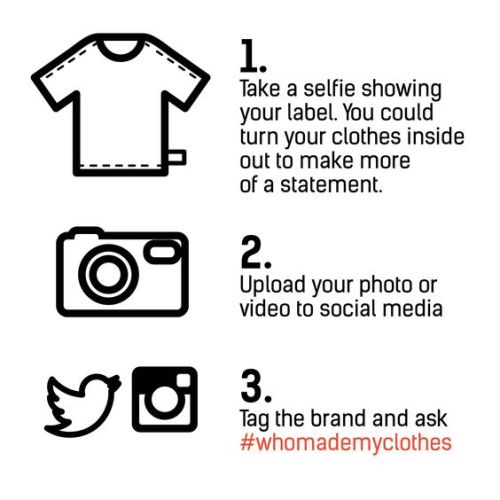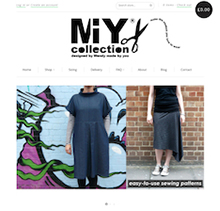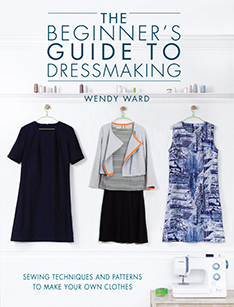 Image from fashionrevolution.org
Image from fashionrevolution.org
Did you know it’s Fashion Revolution week next week from Monday 18th to Sunday 24th April?
No idea what I’m talking about? It’s happened every year since 24th April 2013, the day of the devastating, but preventable collapse of the Rana Plaza building in Dhaka, Bangladesh which housed a garment making factory used by many of the clothing brands on our high street. 1134 people were killed in that incident and over 2500 more injured. All in the name of feeding the West’s appetite for more and more and cheaper and cheaper clothing.
 The collapsed Rana Plaza building – photo from bbc.co.uk
The collapsed Rana Plaza building – photo from bbc.co.uk
In response, Fashionrevolution.org started a simple campaign; for ordinary consumers of clothes like you and me to look at the label inside the clothes we’re wearing and to ask the brand on the label just one question: “Who Made My Clothes?”

Image from fashionrevolution.org
The campaign gains momentum every year online through people taking selfies, tagging the brands on their labels and asking the “Who Made My Clothes?” question. Just search the hashtags #fashrev and #whomademyclothes on Twitter and Instagram and see what comes up.
I think it’s an ingeniously simple idea as it not only encourages brands to be more transparent about their manufacturing processes, but it also prompts us consumers to actually think about the question ourselves; arguably the more important effect in my humble opinion, as big business responds to demand and that demand must come from us.
 Image from fashionrevolution.org
Image from fashionrevolution.org
This subject is close to my heart as anyone that knows me or has been a regular reader of my blog will know. In my early career in the fashion industry I spent 4 years working for a company called Gossypium who produce clothing made from organic fair trade cotton.
When I worked with Gossypium everything was made in India using Indian grown organic cotton and I was lucky enough to visit many of the people who manufactured cloth and garments for us.
 Me looking like a giant in a small village in Tirupur in southern India where villagers could earn a decent living hand weaving organic cotton fabrics in their homes. (2003)
Me looking like a giant in a small village in Tirupur in southern India where villagers could earn a decent living hand weaving organic cotton fabrics in their homes. (2003)
My designs for Gossypium were even stocked in Harrods. I’ve seen with my own eyes what a difference responsible sourcing and manufacturing can make and that even though it can be challenging, it’s not impossible.
 Image from fashionrevolution.org
Image from fashionrevolution.org
This job was in stark contrast to the one I did before, where as a fresh naive graduate I became the sole boyswear designer at Matalan. A role where I found myself literally churning out designs working 60 hour weeks and had no contact at all with anyone on the manufacturing side of the business (at that time it seemed to me that no-one at head office knew exactly where Matalan’s clothes were manufactured).
Before all of that, while still doing my degree, the subject of my dissertation was sustainable textiles. (Quite a revolutionary thing to do on a fashion degree in the late 90’s!)
“It’s sad that something we love to do: making clothes, can be used to exploit people and environments to satisfy the greed of others.” Tweet this.
Now that I’m a maker, teaching and encouraging others to make, we can say “I Made My Clothes” which is brilliant, but now we need to start asking “Who Made My Cloth?”

Organic fair trade fabrics available by the metre to home dressmakers can be hard to find and seem costly, for the same reasons that sustainably and fairly made clothes cost more, but just like consumers of ready-to-wear clothing we have a responsibility to try our best where we can. In this spirit, I have included a sample garment in my new book which is made from hand dyed organic denim, it’s a stunningly beautiful garment and I’m hoping to use much more fabric like this in future.
To find out more about using sustainable fabrics in your dressmaking, I wrote this post almost 3 years ago detailing where you can buy organic fabrics (which I try to keep up to date) and have a read of my inspiring interview with Charlie Ross of Offset Wharehouse that I did last year for Love Sewing magazine.
Want to know more and do something?
Start by having a look at the Fashion Revolution website, there are some brilliant free resources to download (such as the poster above for your selfies) and to print and share online alongside links to all of their work. They also have an excellent resources page which links to news articles, websites, books and more about the subject, it’s here: http://fashionrevolution.org/resources/further-reading/
Then, watch the film “The True Cost”.
If you’re local to Brighton, there is a local Brighton Fashion Revolution group on Facebook who are organising lots of events you can get involved with next week, including a screening of The True Cost film with a Q&A where you will find the knowledgeable Siobhan of Brighton’s Fair shop on the panel. I’m sure there are similar local groups all over the world.
If you want to read all the posts I’ve written on this subject, here they are:
“Knowledge is power; with knowledge you can take action and make decisions that you can live with. #fashrev” Tweet this.
So, this has turned into a bit of an epic post, but it’s an important subject that we need to take seriously. I hope you’ve found it both inspiring and useful, I’d love to hear your thoughts on the subject….
I’ll leave the final word to Dame Viv…..
 Image from fashionrevolution.org
Image from fashionrevolution.org
© Wendy Ward. Share this:






























